沖縄の文化と伝統的な住宅:Okinawan culture and traditional housing
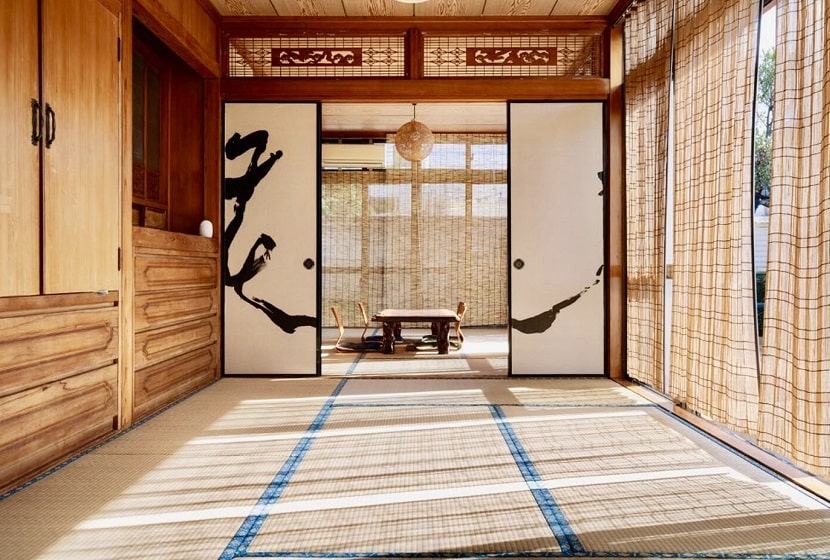
私たちの家『一番座』は35年前に立てられました。伝統的な沖縄の間取りをした住宅であり、沖縄の文化が現れています。沖縄は昔、『琉球』と言われ、アジアの様々な国と交流していました。さらに太平洋戦争後はアメリカから西洋文化も入り、東洋と西洋の文化が融合するユニークな文化を築きました。このような沖縄の文化を『チャンプルー文化』と言います。『チャンプルー』とは沖縄の方言ではごちゃまぜという意味です。沖縄の人はもともと、歌や踊りが大好きでおおらかな民族です。その性質や歴史的背景によって、沖縄は多様性を受け入れることに寛容な文化となったのです。私たちは沖縄を訪れる方に、ぜひ沖縄の文化やゆっくりとした時間の流れを感じてほしいと思っています。ここでは、沖縄の伝統的な住宅について紹介していきますね。
Our house “Ichibanza” was established 35 years ago. It is a traditional Okinawan house with Okinawan culture. Okinawa was once called “Ryukyu” and interacted with various Asian countries. In addition, after the Pacific War, Western culture also entered from the United States, and a unique culture that merged Eastern and Western cultures was built. This Okinawan culture is called “Champuru culture”.“Champleu” means to mix in the Okinawa dialect. Okinawan people love singing and dancing and are friendly people. Due to its nature and historical background, Okinawa has become a culture that is tolerant of accepting diversity. We want all visitors to Okinawa to feel Okinawan culture and the slow flow of time. Here, we will introduce you to traditional Okinawan houses.

伝統的な沖縄の住宅の間取りについて
Traditional Okinawan houses have a characteristic floor plan.Each room has a meaning and a role.
沖縄の伝統的な住宅は特徴的な間取りをしています。それぞれの部屋には意味と役割があります。
① Ichibanza(一番座)
② Nibanza(二番座)
③ Ichibanuraza(一番裏座)
④ Nibanuraza(二番裏座)
⑤ Kichen(台所)
⑥ Himpung(屏風)
⑦ Windbreak(屋敷林)
⑧ Stone wall(石垣)
⑨ Shisa(シーサー)
⑩ Asagi(メーヌヤー(アサギ))
⑪ Amahaji(アマハジ)
⑫ Fool(フール)
① 一番座(Ichibanza)
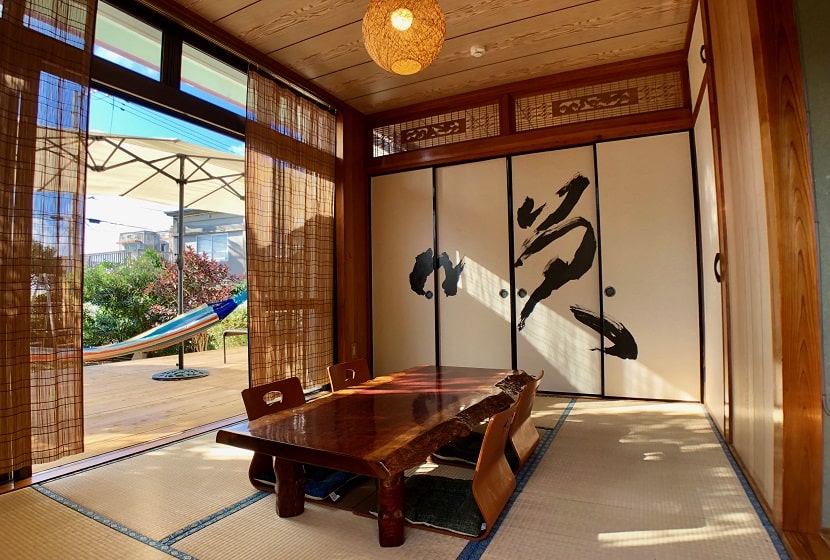
家の南東の明るい場所にあり、お客さんをもてなす部屋です。最も日当たりの良く過ごしやすい場所にあります。湿気がこもらないように、窓も大きく作られています。お客さんを大切にする沖縄の文化の表れとも言われています。
Located in a bright place in the southeast of the house, it is a room that welcomes customers. Located in the most sunny and comfortable place. The windows are also made large so that moisture does not accumulate. It is said to be a manifestation of Okinawan culture that cherishes customers.
② 二番座(Nibanza)

家の正面にあり、仏壇(トートーメー)のある部屋です。沖縄には『祖先崇拝』という信仰があります。ご先祖様が現世の子孫を見守ってくれているという考え方です。仏壇では様々な祭事が行われます。裕福な家には隣に三番座もありました。
A room with a Buddhist altar(Totome) in front of the house. Okinawa has the belief of “ancestor worship”. The idea is that your ancestors watch over the descendants of this world. Various festivals are held at the altar. There was a third seat next to the wealthy house.
③ 一番裏座(Ichibanuraza)

家の北東にあり、大人(親)の寝室にあたる部屋です。部屋の作りは一番座、二番座と比べると簡素になっています。出入り口はなく、窓も小さくつけられています。貴重品を置く部屋としても使われました。
This room is located in the northeast of the house and corresponds to the adult (parent) bedroom. Making a room is simpler than the Ichibanza and Nibanza. There is no doorway and the windows are small. It was also used as a room for valuables.
④ 二番裏座(Nibanuraza)
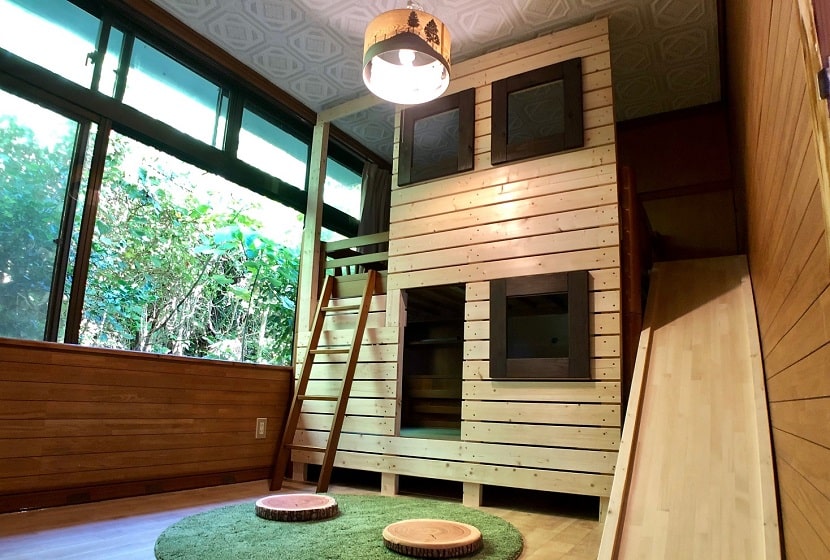
家の北にあり、子供の寝室にあたる部屋です。一番裏座と同じように簡素に作られています。
It is a room in the north of the house that corresponds to the child’s bedroom. It is made as simple as the Ichibanuraza.
⑤ 台所(Kichen)

家の西にあり、他の部屋に西日が入らないように工夫されています。昔は床がなく地面のままで炊事をする土のかまどがついていました。現在はリビングとして家族で過ごす場所となっています。
Located in the west of the house, it is devised to prevent the sun from entering other rooms. In the past, there was a clay oven that cooked on the ground without a floor. Currently, it is a place to spend with family as a living room.
⑥ 屏風(Himpung)
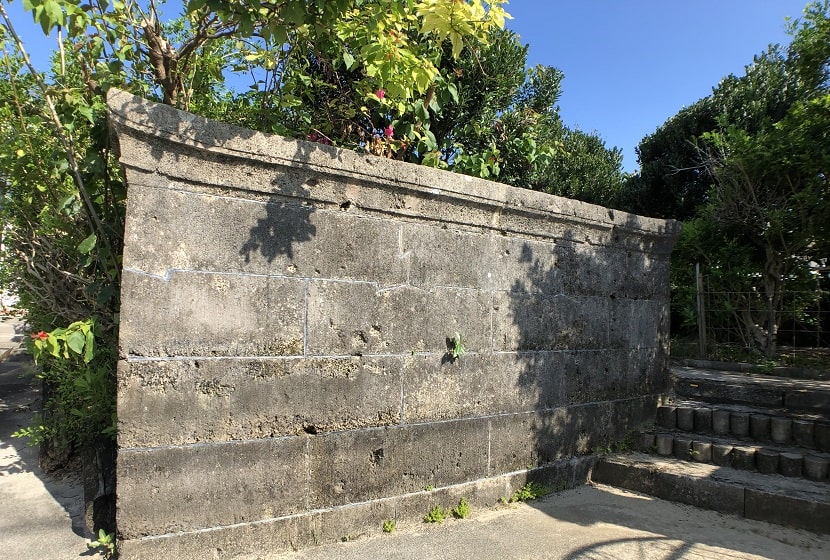
門と主屋とのあいだにある仕切り塀のことです。目隠しや台風の風が屋敷内に入るのを防ぐ役目がありました。また、魔除けの意味もありました。昔はお客様はヒンプンの右側から家に入り、家族の者は左側から入っていました。ここまで大きなヒンプンは珍しいです。
It is a partition wall between the gate and the main house. It served to prevent blindfolds and typhoon winds from entering the house. There was also a sense of amulet. In the past, customers entered the house from the right side of Himpung and family members entered from the left side. It ’s rare to find a house with a big humpung so far.
⑦ 屋敷林(Windbreak)
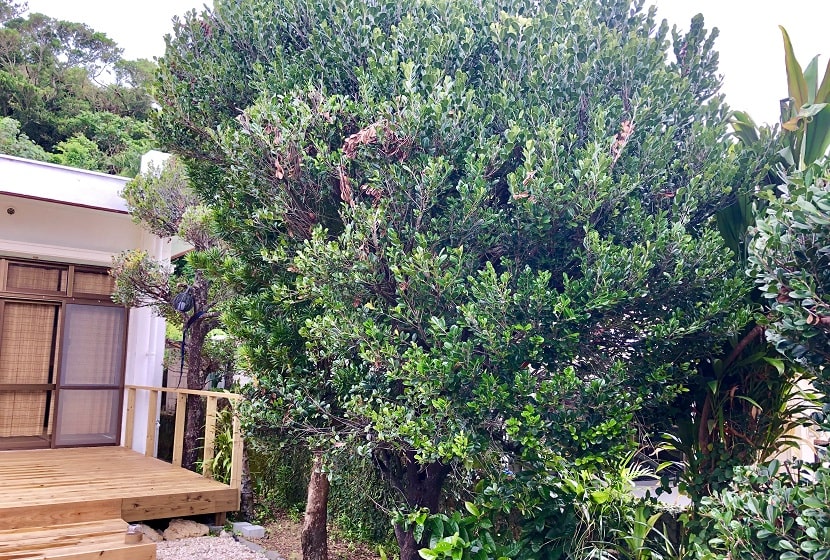
家の周りを囲む樹木で、ふく木やガジュマルなどの高い木が植えられていました。台風の強風から住宅を守る役目をしていました。私たちの家では黒木(クロキ)が植えられています。黒木は沖縄の伝統楽器である三線の材料になります。三線は一番座にあるので弾いてみてください。
Trees surrounding the house were planted with tall trees such as wift trees and banyan trees. The role was to protect the house from the strong winds of the typhoon. Kuroki(Black trees) are planted in our house. Kuroki is a material of the Sanshin that are the traditional instruments of Okinawa.Please play the Sanshin as it is in the Ichibanza.
⑧ 石垣(Stone wall)
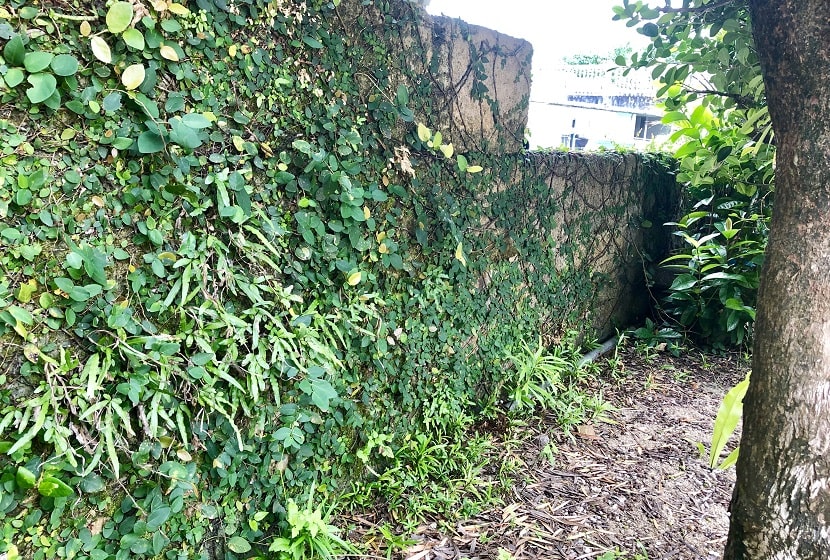
石や珊瑚などで積み上げられた石垣です。台風の強い風を防ぐために家を囲っています。人の背丈より高く積んだものもあります。沖縄の住宅は台風の被害を防ぐために様々な工夫が凝らされています。
It is a stone wall piled up with stones and fences. Surrounds the house to prevent strong typhoons. Some are higher than the person’s height. Okinawan houses are devised in various ways to prevent damage from typhoons.
⑨ シーサー(Shisa)
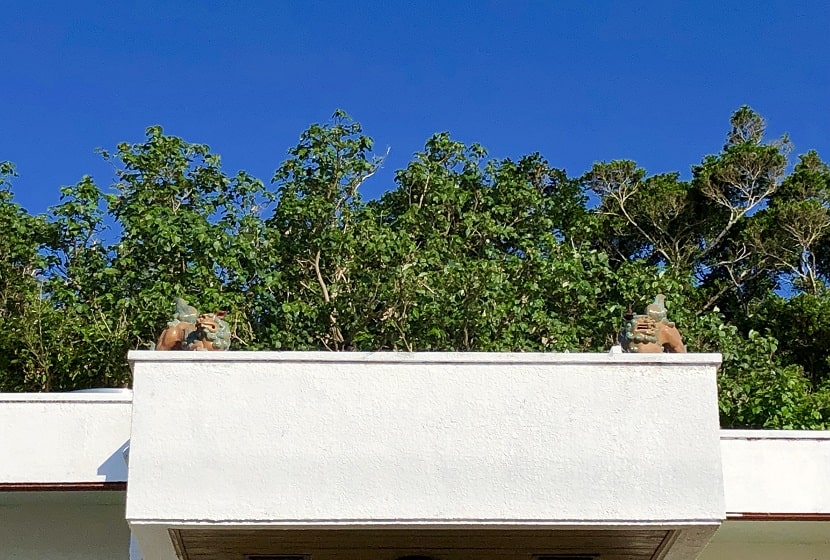
沖縄では伝説の獣像。建物の門や屋根に付けられています。口を開いた雄のシーサーが悪霊に噛み付いて追い払います。口を閉じたメスのシーサーは幸福を呼び込み、今ある幸せを逃しません。シーサーは2対で意味があり、右が雄で左が雌になります。
Legendary beast statue in Okinawa. It is attached to the gate and roof of the building. A male Shisa with an open mouth bites into a demon and drives away. A female Shisa with her mouth closed calls for happiness and does not miss the happiness that is now. Shisa is meaningful in two pairs, the right is male and the left is female.
⑩ メーヌヤー(アサギ)Asagi
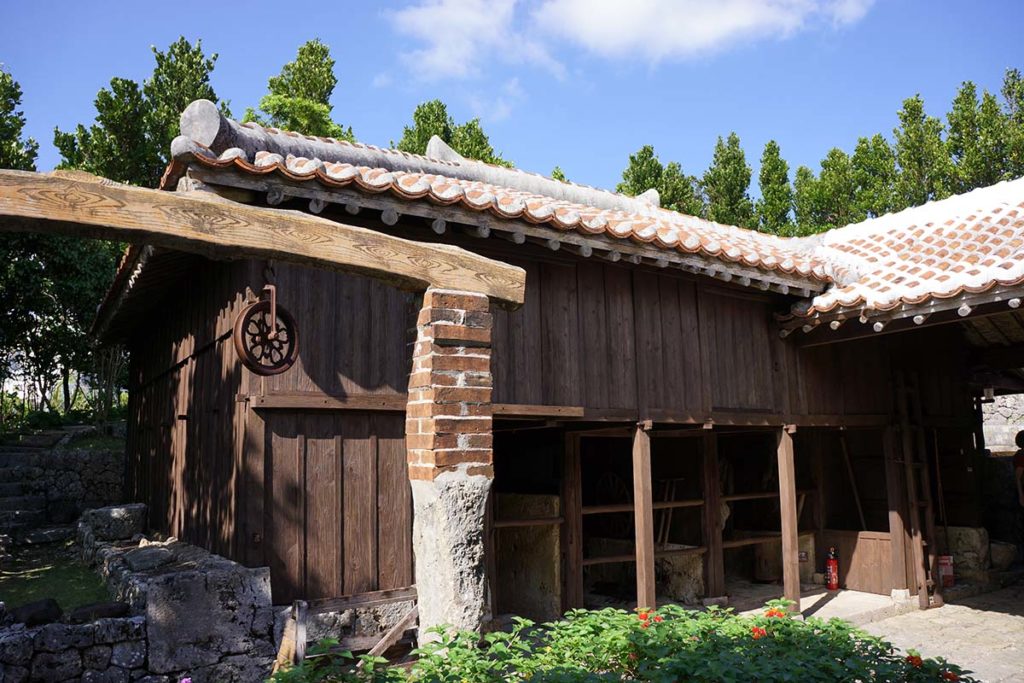
主屋にむかって右側の建物で別館となっています。神様を祀る場所であったり、新婚の夫婦や老人の部屋であったりしました。約80年前の家には備えられていましたが、現在の民家にはほとんどありません。一番座にもありません。
It is an annex in the building on the right side towards the main building. It was a place to worship God, or a room for a newlywed couple or an elderly person. It was provided in a house about 80 years ago, but it is rare in the current private house. Not even Ichibanza.
⑪ アマハジ(Amahaji)
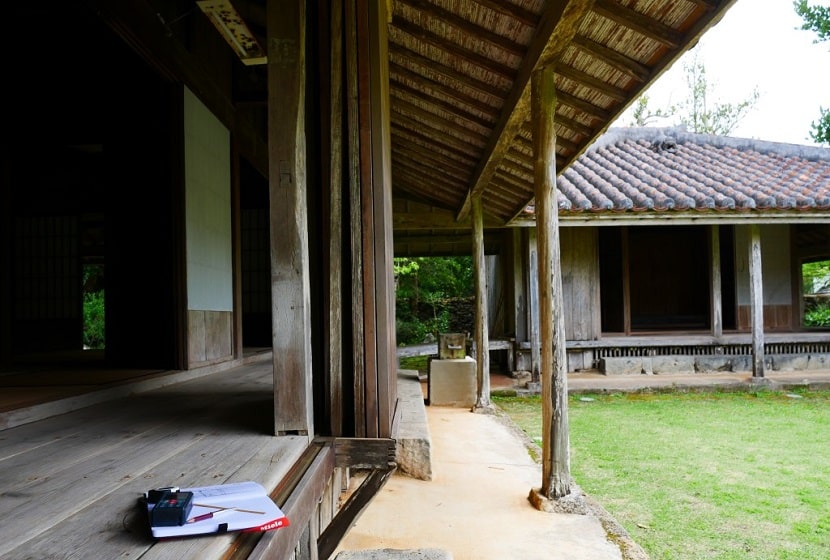
「のき」が外に向かって長くのびてひさしのようになっている部分です。大きく開けた家の中に直接光が入るのや、強風のため横殴りの雨が家に入り込むのを防ぐ役目をしています。
This is the part where the “noki” is long and elongate. It plays a role in preventing light from entering directly into a large open house and the sideways rain from entering the house due to strong winds.
⑫ フール(Fool)
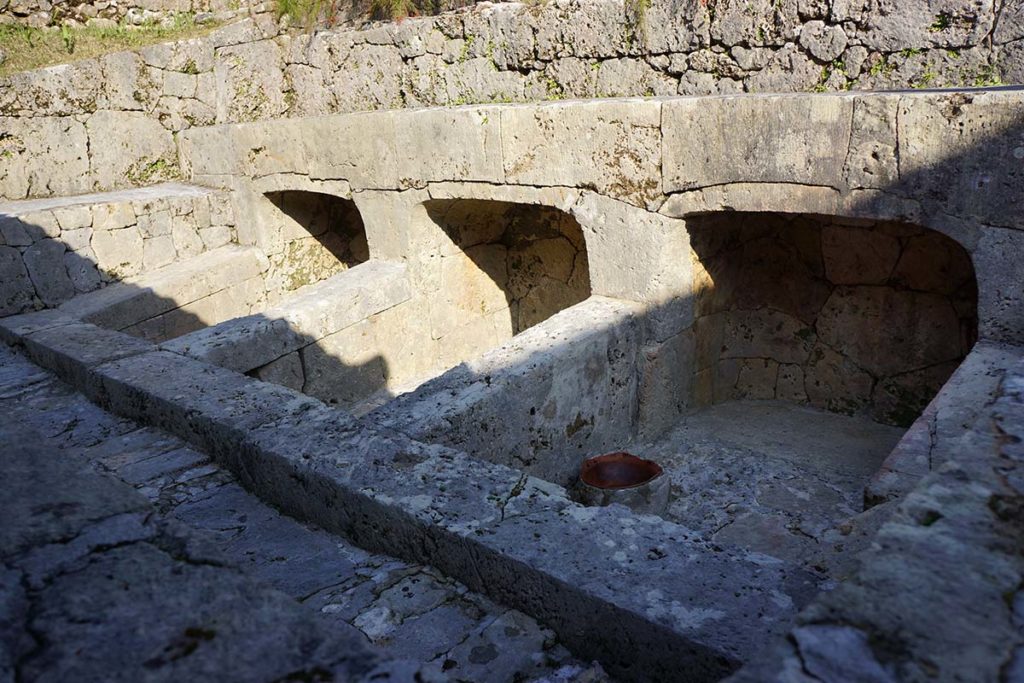
豚小屋と便所を兼ねており、石でできています。昔は豚に人の糞を餌として与えていました。そして、正月などの祝い事のときにその豚を料理したのです。約80年前の家には備えられていましたが、現在の民家にはありません。
It also serves as a pig shed and toilet, and is made of stone. In the old days, people used pigs to feed human droppings. And he cooked the pig during New Years and other celebrations. Although it was provided in a house about 80 years ago, it is not in the current private house.
私たちのゲストハウス一番座はこのように沖縄の伝統的住宅の間取りがそのまま残った古民家です。伝統的な住宅には沖縄の文化や伝統、精神も込められていますよ。ゲストハウスの写真は以下のページからご覧ください。
Our guesthouse Ichibanza is an old private house in which the layout of traditional Okinawan houses remains. Traditional houses have the culture, tradition and spirit of Okinawa. Please see the photos of the guesthouse from the following pages.

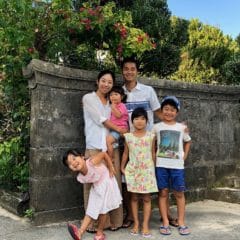
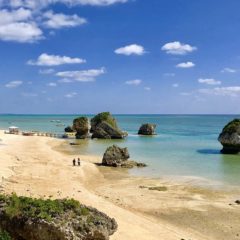
この記事へのコメントはありません。